In every Bug Out Bag discussion group, you’ll hear people talking about their survival fishing kits.
The idea is that these little DIY fishing kits will be able to provide them with food during a disaster scenario.
These can be great, but you’ve got to be realistic. Unless you are MacGyver, some twine and a safety pin probably aren’t going to catch you many fish!
Why Are Survival Fishing Kits So Popular?
I understand why survival fishing kits are popular with preppers and outdoor survivalists. The idea of eating delicious fish while the masses starve is pretty appealing.
Plus, fishing kits have the benefit of being:
- Small and lightweight
- Easy to make
- Cheap
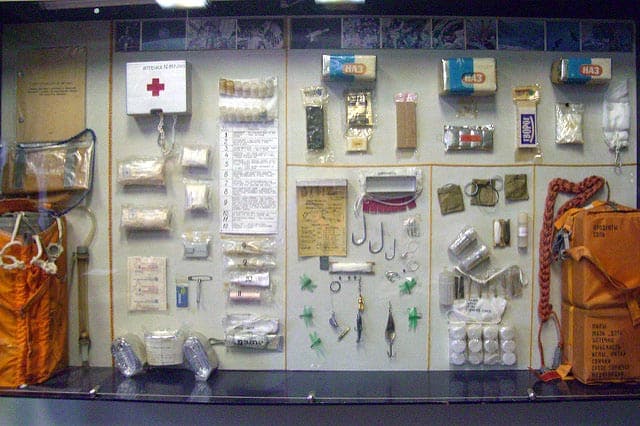
But Are Survival Fishing Kits Really Worth It?
Before you get caught up in the romantic idea of fishing while the rest of the world scrambles for food, let’s discuss the practicality of fishing in SHTF scenario.
Even in ideal circumstances, fishing isn’t always easy. In a disaster situation, fishing has even more downsides that make it impractical for survival:
- Fish has to be cooked, which means a fire and risk of exposing yourself.
- Fishing takes a lot of time, which you won’t have if you need to evacuate.
- Water could be contaminated, so the fish won’t be safe to eat.
- Not all bodies of water have lots of fish.
- Improvised survival fishing kits don’t always work very well!
Having said all that, it is still worth your while getting the basics of fishing down now. The more options you have in a SHTF situation, the better.
I will go into some alternative ways to get survival food later, but let’s dive into the fishing checklist for now.
Survival Fishing Kit Checklist
There are many ways you can improvise your survival fishing kit. For example, you can make fishing hooks from soda can tabs or safety pins.
You can make fishing line out of torn clothing or dental floss.
But these improvised materials are likely to fail on you!
If your survival plan includes fishing for food, you need better, more reliable supplies.
Here’s a list of what you need to include.
1. 50 feet of fishing line
At least 50 feet of monofilament fishing line is needed, tested to 10 to 20lb strength. You’ll need to coil the line to fit in your survival kit.
Many survivalists make small coils by wrapping the line around a pencil. However, this will make your line kink up. Ever try to cast your line when it is all coiled and tangled?
A better solution is to make the biggest loop practical. Maybe even wrap it around your water bottle.
2. Hooks of Various Sizes
One of the most significant flaws I see in survival fishing kits is that they only include one hook size. Often, these hooks are very large.
Ideally, you know where you will be bugging out and what types of fish live there. Then, you choose hooks suited for those fish.
If you aren’t sure what types of fish will be available, choose small hooks. Large fish can bite small hooks, but small fish can’t bite large hooks. So, you increase your chances of getting a meal with small hooks.
While serious fishermen don’t like them, bait keeper hooks are great since you’ll likely be using worms as your bait.
3. Bobbers
These are optional but make it easier to find your line.
Bobbers are also good to have if you aren’t sure if you are getting bites or not.
Slip bobbers are great for regulating how deep your line goes into the water.
Of course, anything that floats — such as a piece of cork or Styrofoam — will work in a pinch.
4. Sinkers/Weights
You’ll need these to get your bait deep enough and also to help with casting the line.
They easily get lost, so bring at least 4-5 of them. Some recommend up to 12 sinkers in your survival fishing kit.
5. Swivels
When improvising a fishing pole, you can expect your line to get kinked. Swivels will prevent this and save you a lot of frustration.
6. Fishing lures
In a SHTF situation, time is of the essence.
You can’t sit around all day, just “hoping” that you’ll get a bite.
A lure will help you catch fish much faster, so it is worth putting in your survival fishing kit.
7. Bait
This is also optional since you can find insects or worms to use as bait.
However, it can help to have some fake worms or fish to use as bait.
Some survival fishing kits even include salmon eggs, though you’d use these up quickly, so I don’t think it is worth packing.
8. Reel
You can make a fishing pole out of a stick in a pinch.
However, it is a lot better to have a reel. The video below shows how you can use a yo-yo reel for fishing.
The technique is worth learning if you will be fishing while bugging out. It means you can rig your lines up and then carry on with other tasks around camp while you wait for some bites.
You can buy a pack of these Yo-Yo Reels on Amazon; they make a lot of sense in a SHTF situation.
In addition to the fishing supplies above, you need to have:
- Good survival knife (see these best survival knives)
- Knowledge of how to fish in the area you will be in (lakes vs. streams vs. rivers vs. ocean)
- Ability to tie fishing knots. You might want to pack a cheat sheet like this one. (Amazon Link)
Readymade Survival Fishing Kits
If you don’t feel like assembling your own kit, you can buy survival fishing kits online.
Some are low-quality, but I’ve found these two contain decent supplies and everything you’ll need to catch a fish.
Alternatives
Before you build your survival fishing kit (and think you will be set for food if SHTF), consider the other survival food options.
Some of these might be much better options in terms of reliability and feasibility during a disaster.
Fish Traps
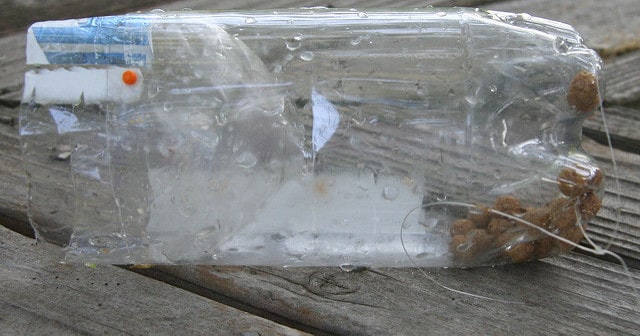
Compared to fishing, fish traps don’t require much time. You just set it and forget it.
You’ll also be able to catch food like frogs with fish traps, which might be more plentiful around ponds and marshy areas. See survival fish traps here.
Foraging
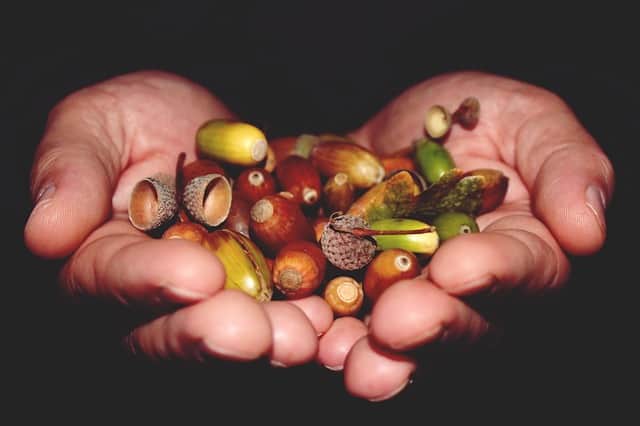
I encourage all survivalists and preppers to learn about edible plants in their area. You’d be surprised how many plants there are that you can eat.
They might not be as tasty as fish, but they can be picked as you walk to safety.
Recommended Reading: How To Eat Acorns
Eating Insects
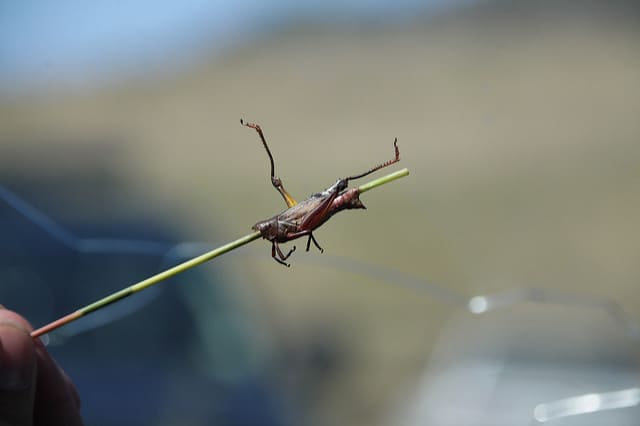
I know that the idea of eating insects disgusts a lot of people, but there are a lot of reasons why insects make the best survival food:
- They are abundant
- Insects are easy to catch using traps or simply by digging them up
- Almost all insects are edible
- Insects are a great source of protein and fat
Just remember that insects should be cooked before being eaten (forget those stupid survival TV shows where people eat live insects).
The Bottom Line?
Since survival fishing kits are small and lightweight, they are worth packing in your Bug Out Bag.
Just don’t think you can rely on fishing as your sole source of survival food!
Increase your knowledge of wild edibles, insect trapping, and other methods of obtaining survival food and you will be much more secure if SHTF.
“post-descent survival kit” (CC BY-NC 2.0) by Esthr,fish trap by Bill Bumgarner, found on Flickr. (CC BY-NC-ND 2.0)“Jason’s Lighter-Cooked Grasshopper” (CC BY-NC-ND 2.0) by Chris Canipe
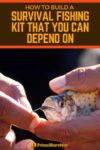









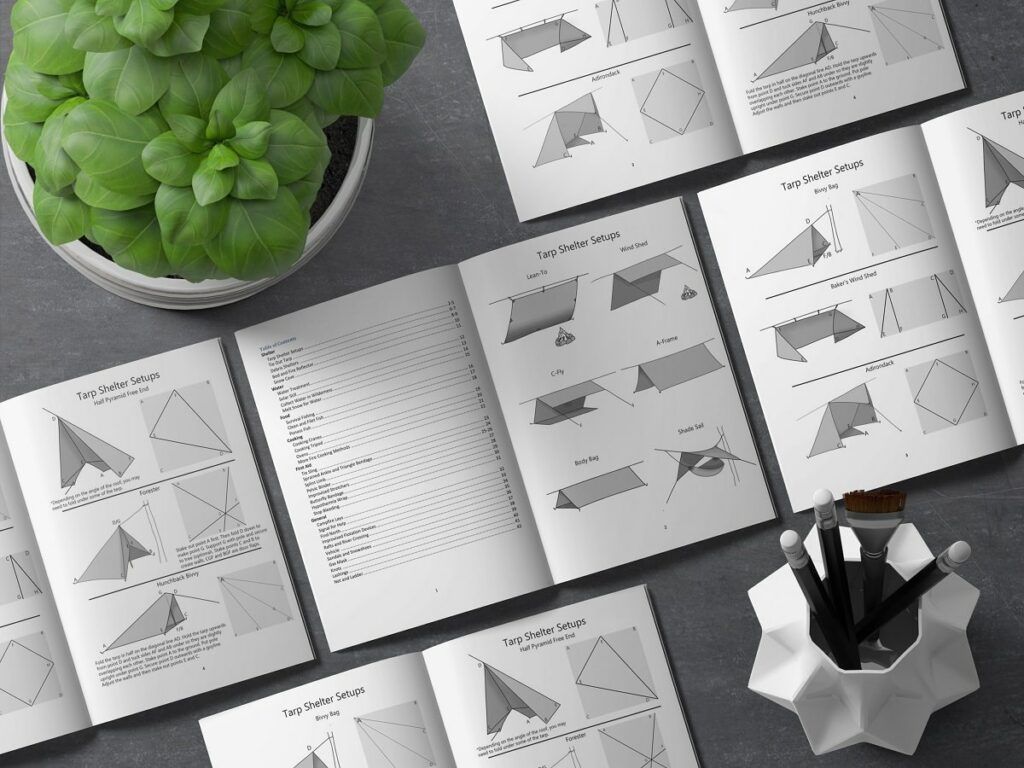

In the Solomon islands people used to fish in the lagoon using a line with a small hook and sinker rolled up onto a half liter bottle. To know if a fish was checking out the bait we’d keep a finger very lightly on the line to feel for vibrations and hoping for the small tug signaling a catch.
Before going out on the lagoon in our dugout canoos we’d forage for bait under the trees. And the bait was put into a ziploc baggie so that it couldn’t go crawling all over the place.
I caught a decent 1.5 to 2 lb bass on a tiny size 14 hook. I was using my pocket fishing kit that is a soda preform tube that got from ebay.
GOD Bless you and your family
Bodies of water are so prevalent where I live, I think such fishing kits are crucial.
If you learn how to make and use bush lines, you won’t have to spend all day on the water to get protein.
Add tiny hooks to your kit. Tiny fish are bait.
If you’re allergic to shellfish, you may want to think twice about eating bugs.
The parts of the fish you can’t eat may make good bait for fish and other things.
I’ve posted on this subject several times. Look for yo yo fish traps lightweight easy to operate and less time consuming than holding a pole.
hey Michael – the yo-yo reel is mentioned in the article. Great bit of kit.